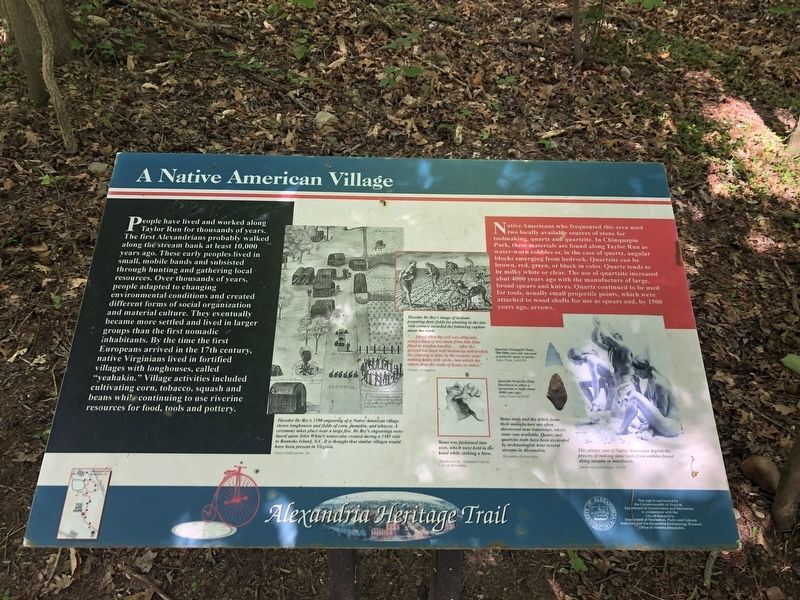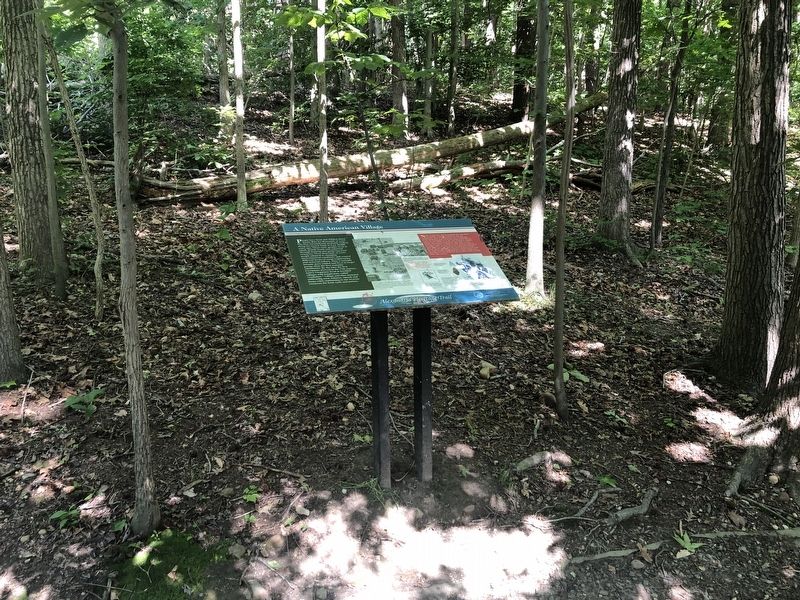Taylor Run in Alexandria, Virginia — The American South (Mid-Atlantic)
A Native American Village
Alexandria Heritage Trail
People have lived and worked along Taylor Run for thousands of years. The first Alexandrians probably walked along the stream bank at least 10,000 years ago. These early peoples lived in small, mobile bands and subsisted through hunting and gathering local resources. Over thousands of years, people adapted to changing environmental conditions and created different forms of social organization and material culture. They eventually became more settled and lived in larger groups than the first nomadic inhabitants. By the time the first Europeans arrived in the 17th century, native Virginians lived in fortified villages with longhouses, called "yeahakin." Village activities included cultivating corn, tobacco, squash and beans while continuing to use riverine resources for food, tools and pottery.
Native Americans who frequented this area used two locally available sources of stone for toolmaking, quartz and quartzite. In Chinquapin Park, these materials are found along Taylor Run as water-worn cobbles or, in the case of quartz, angular blocks emerging from bedrock. Quartzite can be brown, red, green, or black in color. Quartz tends to be milky white or clear. The use of quartzite increased abut 4000 years ago with the manufacture of large, broad spears and knives. Quartz continued to be used for tools, usually small projectile points, which were attached to wood shafts for use as spears and, by 1500 years ago, arrows.
Erected by City of Alexandria, Virginia.
Topics and series. This historical marker is listed in these topic lists: Anthropology & Archaeology • Colonial Era • Native Americans • Settlements & Settlers. In addition, it is included in the Virginia, The City of Alexandria series list.
Location. 38° 49.038′ N, 77° 4.883′ W. Marker is in Alexandria, Virginia. It is in Taylor Run. Marker can be reached from Francis Hammond Parkway, 0.2 miles east of Key Drive, on the right when traveling east. Touch for map. Marker is at or near this postal address: 1099 Francis Hammond Pkwy, Alexandria VA 22302, United States of America. Touch for directions.
Other nearby markers. At least 8 other markers are within walking distance of this marker. Life of a Forest (within shouting distance of this marker); Listen for Chipmunks (about 600 feet away, measured in a direct line); Life of a Creek (approx. ¼ mile away); Original Federal Boundary Stone, District of Columbia, Southwest 3 (approx. ¼ mile away); Mills and Molassas (approx. ¼ mile away); President Gerald R. Ford, Jr. Residence (approx. 0.3 miles away); A Chinquapin House (approx. 0.3 miles away); Fun in the Forest (approx. 0.4 miles away). Touch for a list and map of all markers in Alexandria.

